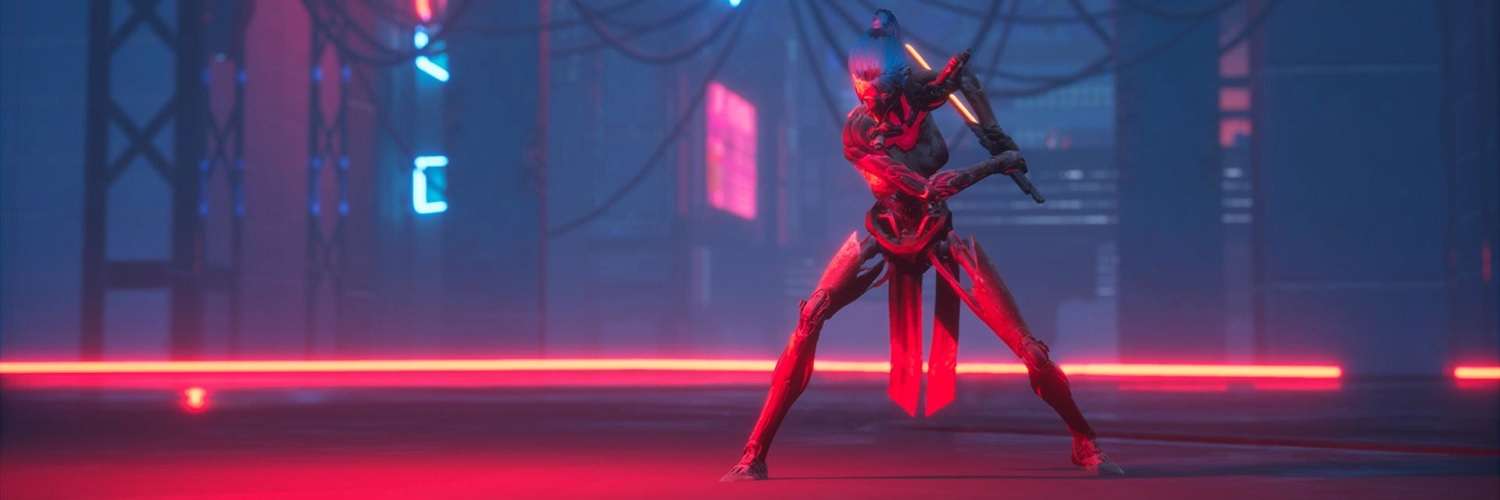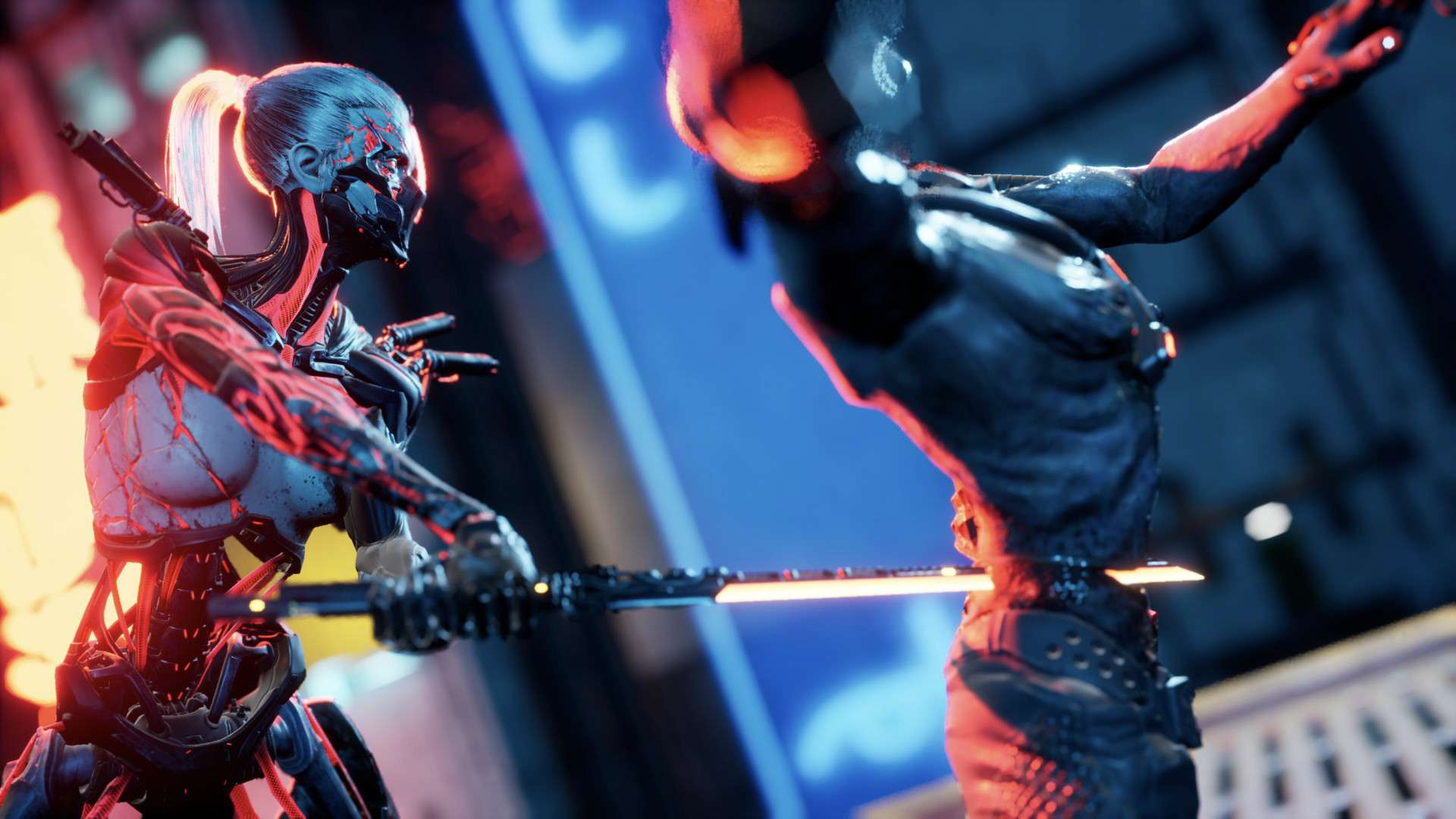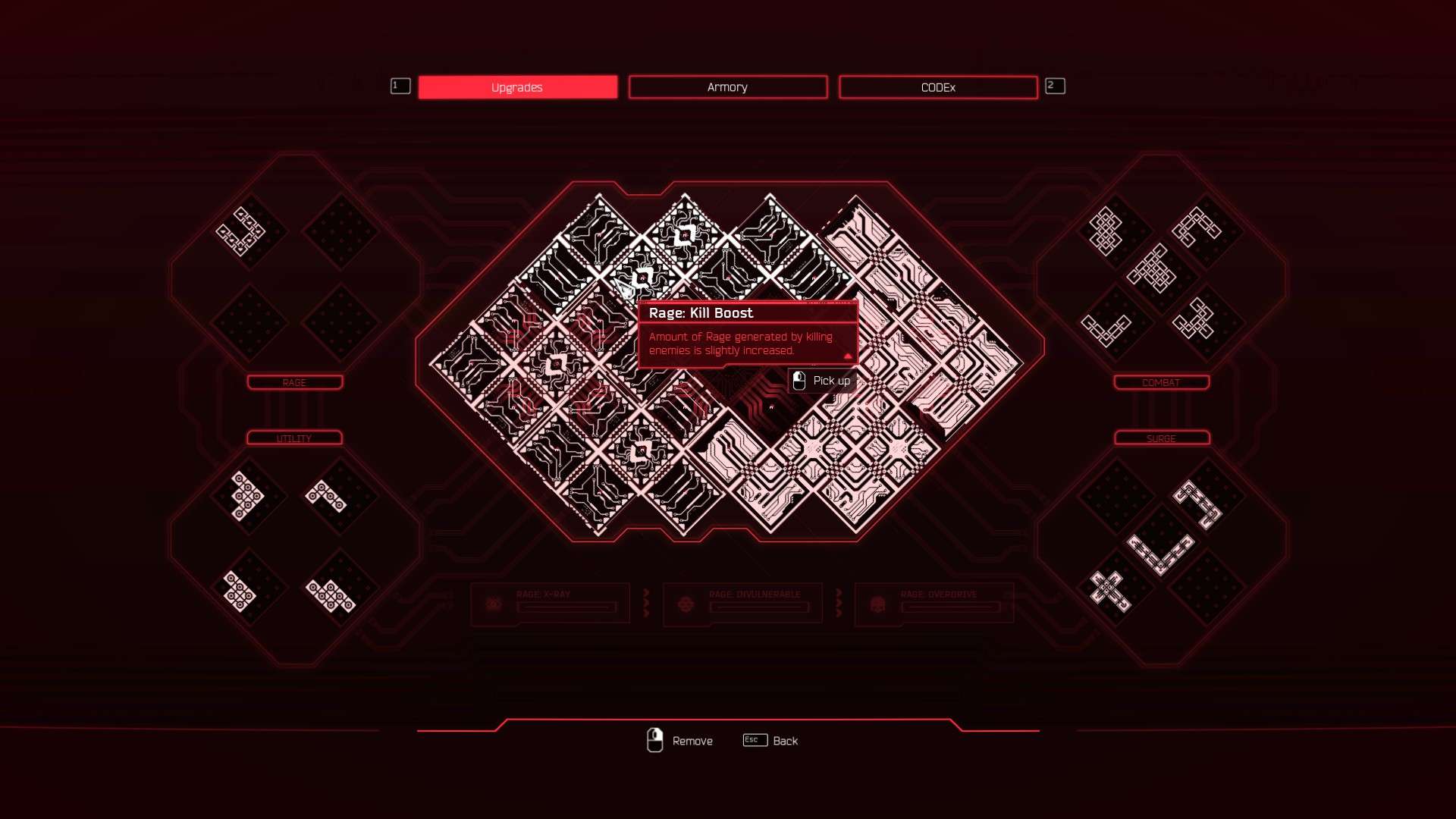
Ghostrunner: Project_Hel PC Review
Ghostrunner was a surprise hit for me in 2020. I think it was for many people, even hitting DarkZero’s third best game of 2020. The game focused on precisely sculpted level design mixed with puzzle-platforming action, which was an absolute blast. Even though it was based around a live, die, learn gameplay concept with its one-hit deaths from enemies and fall pits, its addictive nature hooked itself into the player. It was a euphoric delight to overcome its challenges, but I was wanting more once it was finished. New modes were added in the updates, but eventually, a new expansion campaign was announced, Project_Hel, and now it’s here to offer a new Ghostrunner campaign for £12.49
In terms of the story, Project_Hel is a prequel to the events of the main game, in fact, it’s the hours or so before Jack, the main character from Ghostrunner, is saved by the Climbers and goes on his warpath through Dharma Tower. The developers have taken a boss from Ghostrunner, Hel, and made her the main character in the DLC. She is another ghostrunner who has been awakened by Mara to help fend off the rebels within Dharma Tower. Just like Ghostrunner, the plot is told during the gameplay, so nothing interrupts the player’s flow. This story fills in some of the missing gaps that show how the Climbers got into the situation in the first game. In terms of how great it is, apart from hearing the familiar voices of the resistance and Mara, this is a less exciting story to get through. There are some neat references to the original that will give fans a little discussion, but the story as a whole is quite generic this time around.

Project_Hel‘s campaign is structured in the same way as Ghostrunner, which means the levels are specifically designed in a way to keep the momentum going with Hel’s ridiculously parkour skills. The levels are once again excellently designed, although not as visually pleasing in their artistic side, as a lot of the neon elements that were in the original are not here, due to the locations this DLC takes place in. Players will still have to get through each level without taking a hit from enemies and avoiding bottomless pits in the Dharma Tower. Hel has a bulk of the same move sets as Jack. She has a katana to kill enemies, and elements of the platforming; wall-running, sliding, slow-motion dashing, are all present.
The tweaks come in the form of changes to the abilities. Hel is a faster, more agile version of Jack, her jump is more of a long jump rather than the bunny hop of her fellow ghostrunner. She has the ability to perform an air jump using sensory boost power that causes her to lunge in an arc, making the air traversal much improved than the main game and can help Hel get out of situations where a standard jump might have led to death. The arc jump is part of the sensory boost ability that slows down time, where in this state, the enemies are slow and Hel uses this time to dodge enemies or take a timeout to think where to land. It is an incredibly handy tool to have and has saved me plenty of times from death. It makes some of the parkour elements easier to achieve, as these are fairly close together, but occasionally the game will throw in one that requires the use of the arc jump, such as getting around a force field to land on a surface to either wall run or continue forward.

This additional mobility plays more into the combat of Project_Hel, as there are situations towards the latter part of the downloadable content where the rooms are filled with many enemy types, and having the slow down ability helps avoid the incoming rush of bullets and lasers. Just like Hel herself, enemies are also killed in one hit. The tools available are the katana that requires getting close to the enemy, but there are other ways to eliminate enemies, which makes the game a tad easier in the encounters if the player can manage to keep their rage metre. Rage metre builds up from kills or collecting an energy orb. This energy is not permanent, so if the action stops the metre itself will slowly drain. If the rage metre is over halfway this will grant a shield giving Hel an additional hit in exchange for the depletion of half a metre. Rage is also used to send out an orb blast that is extremely handy for decimating an enemy, as even energy shields cannot protect against the orb. Great for soldiers that can normally only be killed from behind due to their front shield. On the topic of enemies, there are a couple of new ones joining a lot of the returning enemies but their tactics are straight forward that the dynamics of the combat do not change.
Hel can upgrade her abilities, but not through the cybervoid levels, as these are gone. Instead, abilities are unlocked based on progress, with each level unlocking more abilities and blocks within the upgrade system for Hel to use. Upgrades have to be selected, as they need to slot into a grid, with each upgrade being a shape that has to fit around other ability shapes to be enabled. Some of the upgrades are powerful, such as double orb waves and additional shields. These upgrades are kind of throwaway. I actually did not notice them until about halfway through the game’s seven stages, two of those are bosses, and so while they can help make things easier, they are certainly not needed to get through the game. The two boss fights, while nothing memorable, are all about abusing Hel’s arc jump ability to avoid either ground or air-based dangers. It makes the fights different than in the previous game, and the last boss fight is debatably better than the main game, but that is not the reason to be playing the new content.

Visually the game looks great and the performance remains the same as the main game. This means that if you want to turn on raytracing at 4k with maximum graphics, then expect to be running the game with some sort of DLSS. I was using “DLSS Balanced” to keep it above 60fps with the Nvidia 3090 graphics card. The visual blur is minimal, so the trade-off is easily worth it at ultra high definition. On the audio side, the music is once again stellar. A new banging soundtrack from Daniel Deluxe brings six tracks that sync so well with the atmosphere and on-screen action. The synthwave and cyberpunk visuals are a delightful match.
Ghostrunner: Project_Hel offers a nice addition to the base game, upholding the original game’s amazing soundtrack and visuals. The expansion brings an extra couple of hours of that addictive live, die, repeat puzzle and action format that somehow the developers have managed to make work without frustration. The impact this time around is not as awe-inspiring as the surprise hit of the main game, but Project_Hel takes those foundations and adds a little twist with more combat-based scenarios to find solutions to, but does nothing to push the initial design forward that was formed in Ghostrunner. More of the same, then, although, not a negative on this DLC, since the original was not a lengthy game either. This is one for the fans, giving those more of what they were asking for until the sequel arrives.
